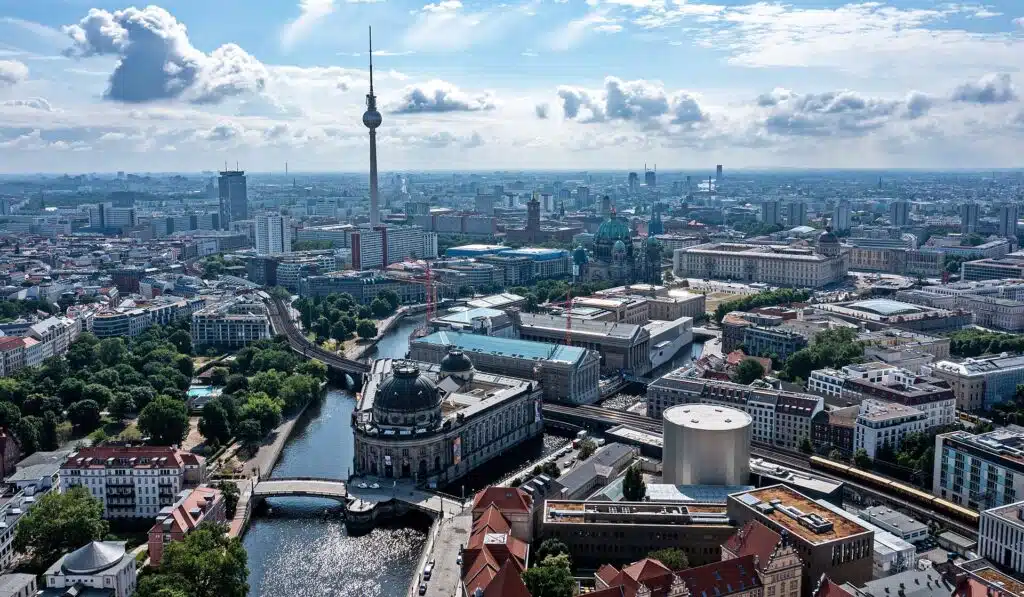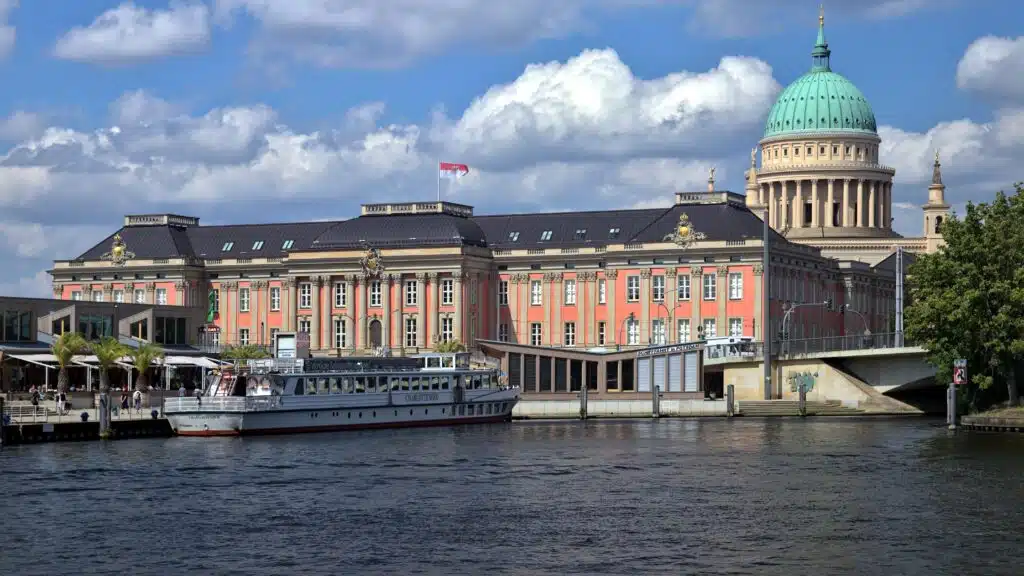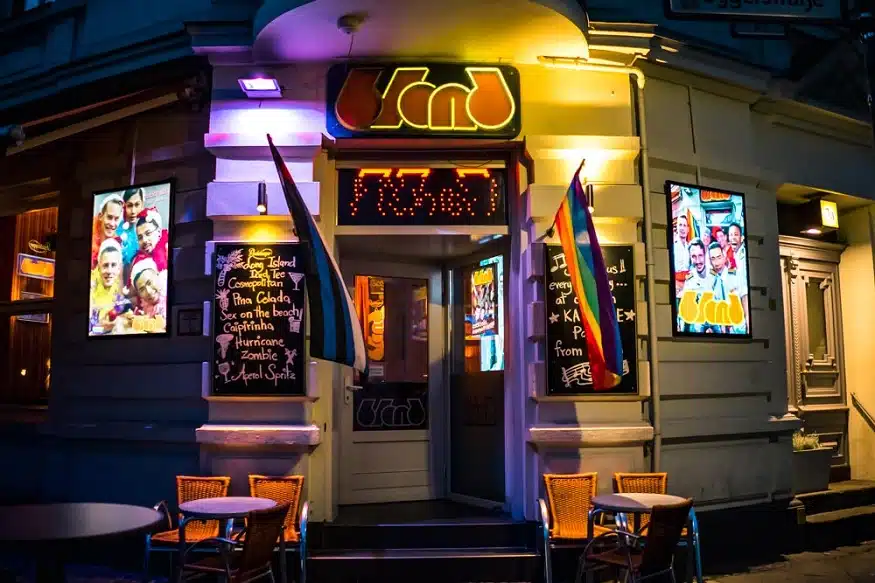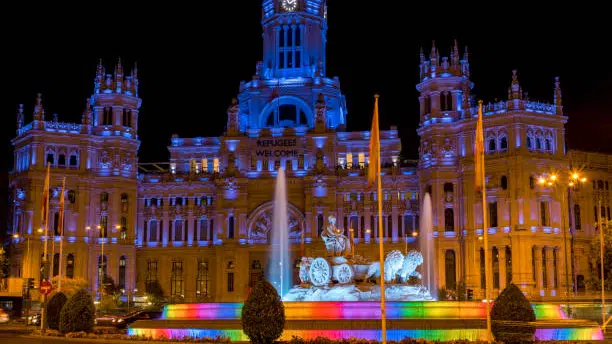In our Gay Berlin Guide, we will introduce you to a few essentials every LGBT+ tourist must know when visiting this magnificent German capital(and also one of the most prominent gay travel destinations in the world), from where to go and where to stay to what clubs and events to see and some safety tips for every gay traveler. So, if you are interested, please stay with us to learn more.
Our website includes affiliate links. So, remember that we may receive commissions when you click our links and make purchases. Please read our legal disclaimer document for more information about our Affiliate disclaimer and other disclaimers like the Fair-Use disclaimer.
Intorduction to Gay Berlin
Berlin, the capital of Germany, is a well-known city with a population of over 3.5 million. It is considered the most affordable capital city in Western Europe. It is renowned for its architecture, festivals, contemporary arts, nightlife, and high quality of living.
The city has a rich cultural history, with significant events from the Weimar Republic, Third Reich, and Soviet Era still visible.
Berlin is a liberal city known for its open and expressive culture, reflecting the diversity of its population. It has become a genuinely inclusive and welcoming place shaped by numerous social movements and political changes.
Gay Rights in Berlin
Germany is socially liberal, with legal protections for gay Germans, such as gay marriage and outlawing workplace discrimination. Berlin is known as a safe destination for the LGBTQ community.
Gay Scene
Berlin has two central gay districts: Schöneberg and Prenzlauer Berg. Schöneberg has most gay hotels, bars, cafés, and shops. Additionally, two smaller gay areas are in Kreuzberg and Friedrichshain. Top gay events include Folsom Europe, the Berlinale Film Festival, the Gay & Lesbian Street Festival, Gay Pride, Hustler Ball, and many large sex parties. The scene is diverse, and many gay bars and clubs never close.
Getting to Berlin
Berlin has two airports: Berlin Tegel Airport and Berlin Schönefeld Airport. The S-Bahn is the best way to travel from Berlin Brandenburg Airport to the city. Most national and international trains arrive at Hauptbahnhof, Berlin’s central train station. Use a weekend train pass to get around Berlin, and most of Berlin is within the AB region. Traveling by train from London to Berlin is possible but more expensive than a direct flight. Eurolines connects European cities to Berlin, but it’s the slowest way to travel. Berlin is also accessible by car, but it might take up to a day or two, depending on where you depart.
Note: Check some valuable flight deals from your area to Berlin here. If you want to find the best and the quickest way to move to Berlin and around the city, we recommend visiting Omio.
Getting around Berlin
Berlin boasts an extensive and well-developed public transport network that includes underground and light-rail trains, buses, and trams. Whether planning to explore the city center or the outer districts, using public transportation is quick, comfortable, and safe. This guide provides information on using Berlin’s public transport system. It offers advice on the best ticket options and passes.
Are you visiting Berlin for the first time? Here are the best ways to get around:
1. Public transportation: Explore the city using Berlin’s extensive train, subway, bus, and tram network. Remember to validate your ticket!
2. Bicycles: Rent a bike from one of the shops throughout the city and experience Berlin at your own pace.
3. Walking: Take a stroll and explore Berlin’s vibrant neighborhoods.
4. Taxis and ride-sharing: Taxis and ride-sharing services like Uber are available in Berlin but can be more expensive.
5. Sightseeing Buses: Short on time? Sightseeing buses provide informative audio commentary and access to popular attractions.
Note: If you want to find the best and the quickest way to move around the city, we recommend visiting Omio.
However, if you wish to learn more about Public transport, we recommend visiting the Official Berlin website.
Schöneberg
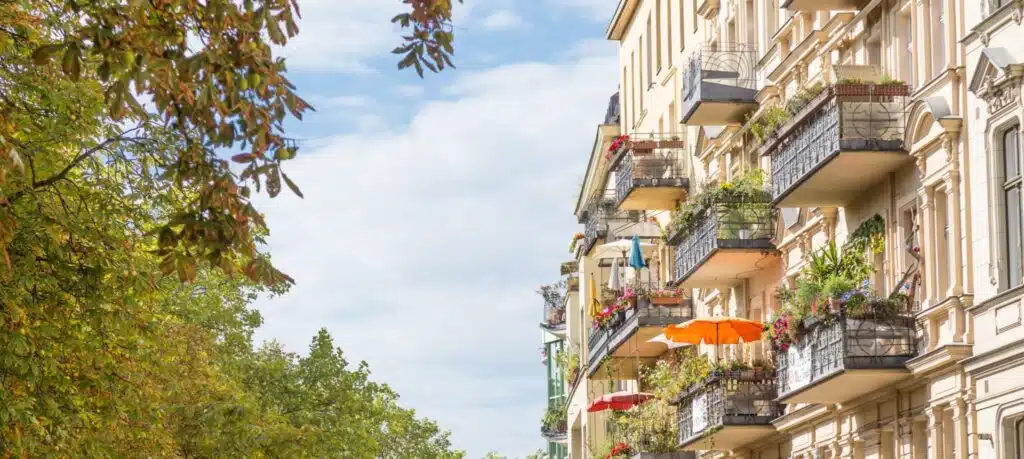
©cuddlynest.com
Gay Berlin: Neighborhood Guide
Berlin’s LGBTI* community thrives at Nollendorfplatz in Schöneberg, offering a vibrant nightlife, restaurants, cafes, and shops. Other rainbow neighborhoods include Kreuzberg, Bergmannstraße, and Mitte, where Weinberg Park is a popular hotspot. Berlin’s LGBTI* scene is diverse and not to be missed.
Schöneberg
Schöneberg is the heart of Berlin’s LGBTQ+ community. In 1897 the “Scientific-Humanitarian Committee,” the world’s first-ever LGBTQ+ organization, was founded there. Schöneberg boasts some of the oldest gay bars, including Tom’s Bar, Prinzknecht, Heile Welt, and Hafen. After a night out, we recommend stopping by one of the trendy cafes, such as Romeo & Romeo, Cafe Kawil Kunde, or Cafe Berio. You should check out Fritz & Co. or Sissi for a delicious lunch or dinner.
Prenzlauer Berg
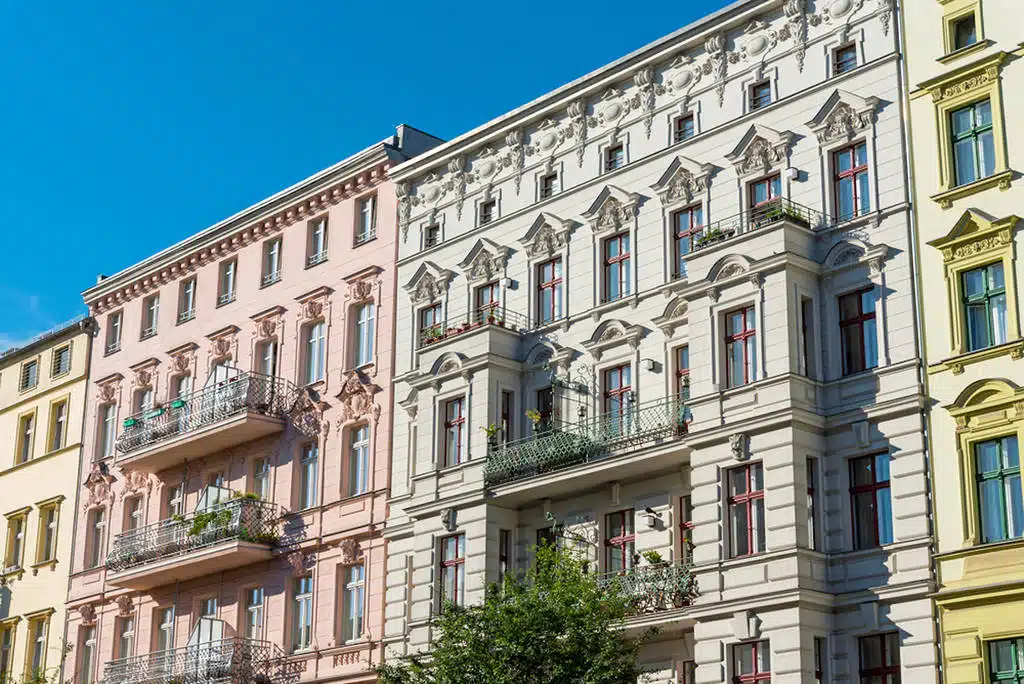
©Shutterstock
Kreuzberg
Kreuzberg is a well-known district among the LGBTQ+ community. After the fall of the Berlin Wall, Kreuzberg was rebuilt and began attracting more and more unique individuals over time. Today, it is home to one of the most prominent LGBTQ+ communities in the city. There are many excellent gay bars, such as Möbel Olfe and Roses, trendy cafes like Südblock, and a gay museum called the Schwules Museum.
Neukölln
Kreuzberg has become a popular destination for the LGBTQ+ community. Its popularity has grown so much that many people have moved to the Neukölln neighborhood, located further south. So, if you’re interested in visiting gay bars in the area, you should check out Cafe Melitta Sundström or SilverFuture. And if you’re looking for a nice place to grab a quick bite, you might want to consider visiting Café K-Fetisch or Alaska.
Prenzlauer Berg
In the 1960s, Prenzlauer Berg was the center of East Germany’s gay scene. Today, it’s home to trendy gay bars like Flax and popular brunch spots like Schall & Rauch.
Friedrichshain
Friedrichshain is a lively and edgy district in Berlin, famous for its exceptional nightlife and top-notch clubs.
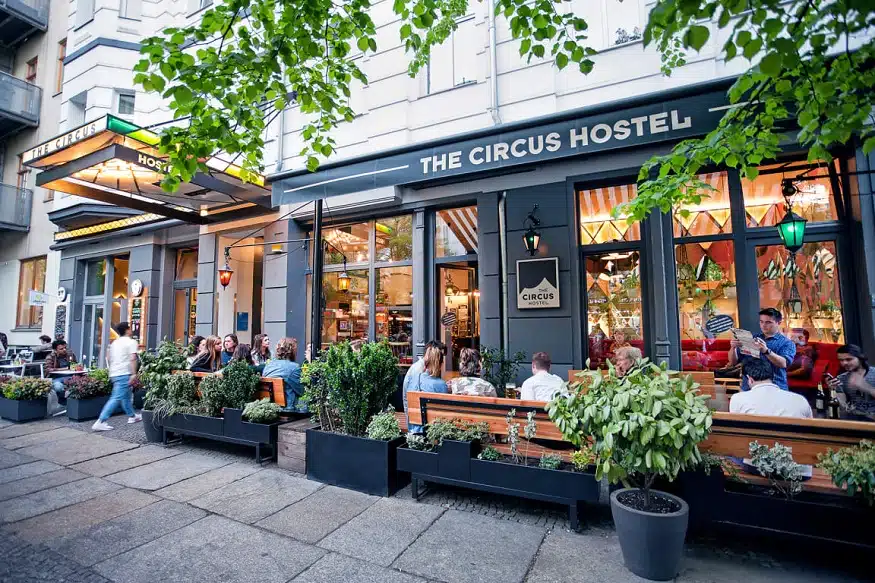
©Booking.com
Where to stay in Berlin
To make the most of your trip to Berlin, stay in Mitte, as it’s well-connected to the city’s popular attractions. Nollendorfplatz in Schöneberg is the hub for the LGBTI* community, while Kreuzberg and Bergmannstraße have many shops and nightlife options. Don’t forget to check out Weinberg Park in Mitte for LGBTI* hotspots.
Here are a few hotels we recommend.
TWO Hotels Berlin by Axel
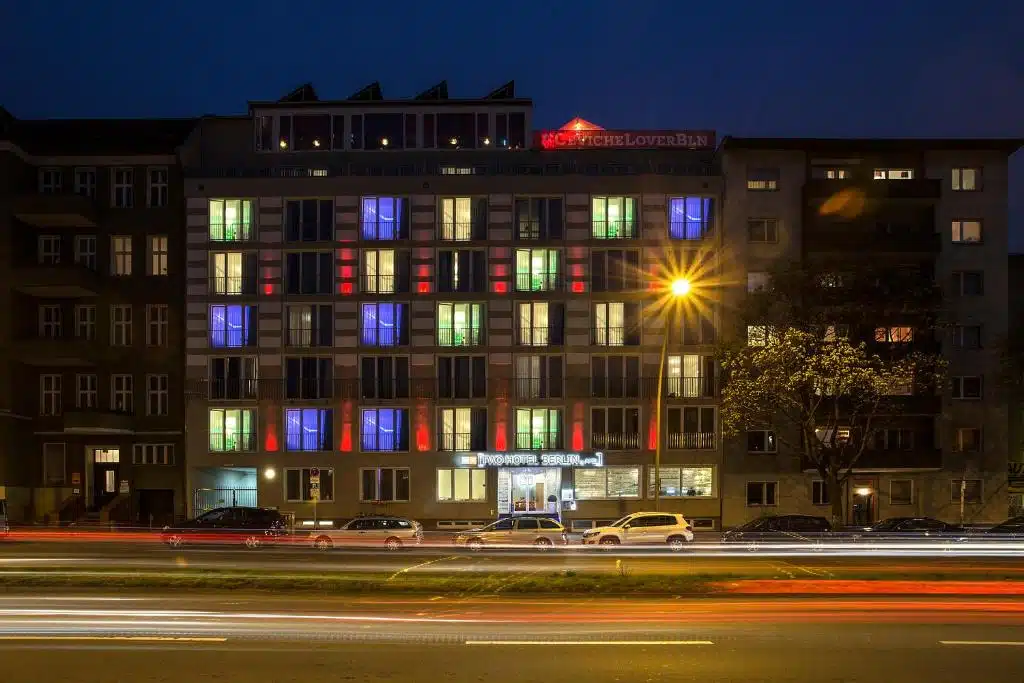
©Booking.com
Pullman Berlin Schweizerhof: Amenities at the hotel include a pool, restaurant, gym, Bar, spa, and babysitting services. The hotel restaurant XXenia serves International cuisine and fish and chips.
ArtHotel Connection is a gay hotel in Berlin-Schöneberg, close to the Prinzknecht bar and Connection Club. The hotel has 16 rooms and is a popular option for gay travelers.
Axel Hotel Berlin – Axel is a well-known gay chain with a Berlin branch. It’s the first hotel to be called “straight-friendly.” The Berlin location has a lovely rooftop terrace and a popular restaurant and Bar. The hotel is centrally located and close to the Schöneberg neighborhood.
Two Hotels by Axel is in the district of Charlottenburg-Wilmersdorf, close to Kurfürstendamm. It has 86 modern rooms and follows Axel’s signature style in a cosmopolitan atmosphere.
Guesthouse Berlin – A small, quaint, gay guesthouse in Berlin-Schöneberg with helpful and friendly hosts.
Motel One is a ‘design’ hotel chain for budget travelers. Modern, clean, and a good value for the money. It is very close to Schöneberg’s gay area.
Rooms at My Gay Hostel in Berlin-Schöneberg start at €18 with a two-night minimum stay. The hostel offers shared single, double, and bunk rooms for gay travelers.
Circus Hostel: Berlin has no shortage of unique accommodations, and the quirky Circus Hostel is a backpacker favorite. Circus-and-comic book-themed decor adorns this vibrant and colorful hostel. The location is perfect if you plan a Berlin itinerary packed with sightseeing.
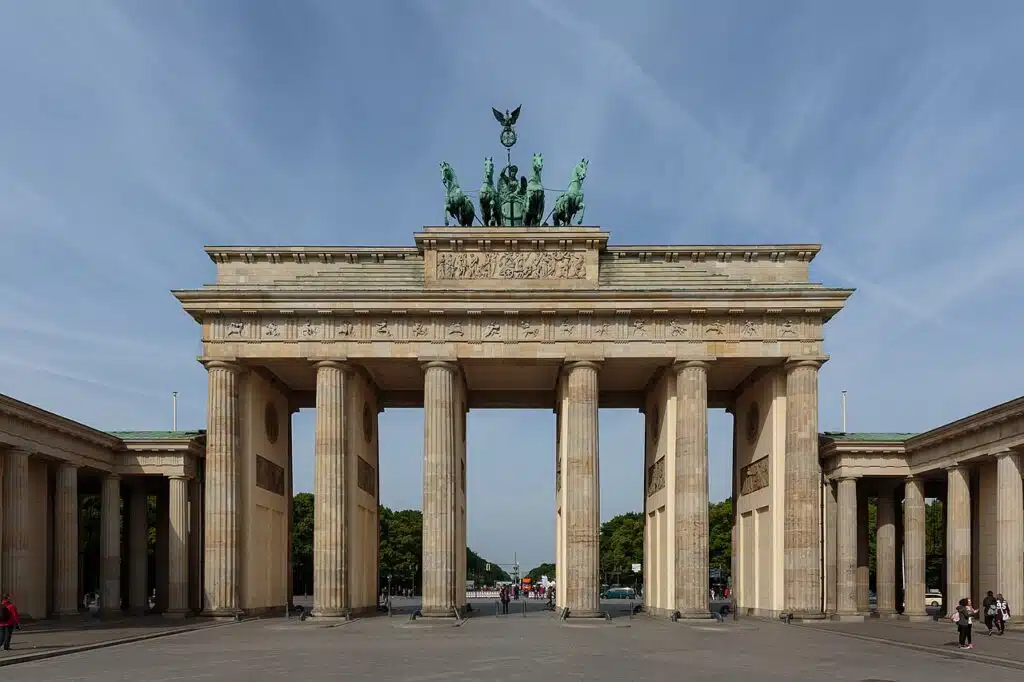
©By Pierre-Selim Huard – Self-photographed, CC BY 4.0, https://commons.wikimedia.org/w/index.php?curid=40351258
Things to See & Do
Berlin is a great city to discover on foot, marvel at its monuments, and learn about its fascinating history. These are the most-visited landmarks in Berlin.
The Brandenburg Gate
Firstly, The Brandenburg Gate, known as Brandenburger Tor in German, is a famous monument and a historical city gate in Berlin. It was designed in 1791 and is located near Pariser Platz in the city’s center. The gate is a significant symbol of Berlin and is considered one of the most renowned monuments in the world.
Pergamon Museum
Berlin’s famous museum houses the grand Altar of Zeus, among several other notable artifacts. Check out our complete guide to the Berlin Museum.
Schwules Museum
This museum showcases the global and German history of gay culture. It’s worth a visit but may appeal to only some.
Deutsches Historisches Museum
It is a great museum that offers a fascinating look at Germany’s grand and turbulent history.
Reichstag (Parliament)
The German Parliament (Bundestag) meets regularly in the historic Reichstag building. Restored by Norman Foster in 1990, it has become one of the capital’s iconic symbols. Discover how to visit it.
Berlin Wall Memorial
Firstly, this is one of the most iconic parts of Berlin’s history. Grab a beer and stroll, or take the Trabi tour along the wall. Graffiti artwork tells the story of a deviant period in time.
Note: If you wish to save cash while visiting many attractions, we suggest buying a Berlin Welcome Card: All-Inclusive Ticket.
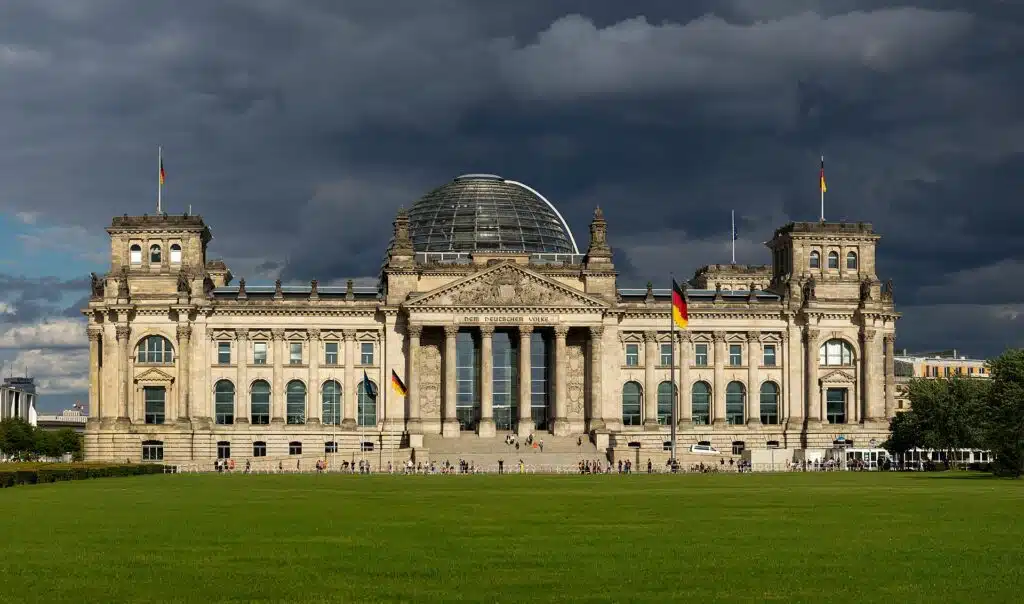
©By Jörg Braukmann – Own work, CC BY-SA 4.0, https://commons.wikimedia.org/w/index.php?curid=109902867
Day Trips from Berlin
Potsdam
Take the S-Bahn S7 line from Berlin Hauptbahnhof to reach the unforgettable gardens. You can also consider taking the RE1 train. The cost for an ABC day ticket is 7.40€. If you plan to rent a bike to tour the gardens, remember that some areas are only accessible by foot. As a photographer, you’ll never find a backdrop like this anywhere.
Sachsenhausen Concentration Camp
Are you seeking the most efficient and hassle-free way to reach your destination? Click here to discover the best route and transportation options available!
Dresden
The Dresden railway is a double-track, electrified central-line railway through Saxony, Brandenburg, and Berlin. So, spend at least two days exploring the city’s historic sites, shopping, dining, and drinking. You can reach Dresden from Berlin by train, car, or bus. The EC train is recommended, costs $40-80, and takes 2 hours.
Check out this link to see the most popular day trips from Berlin on Viator.
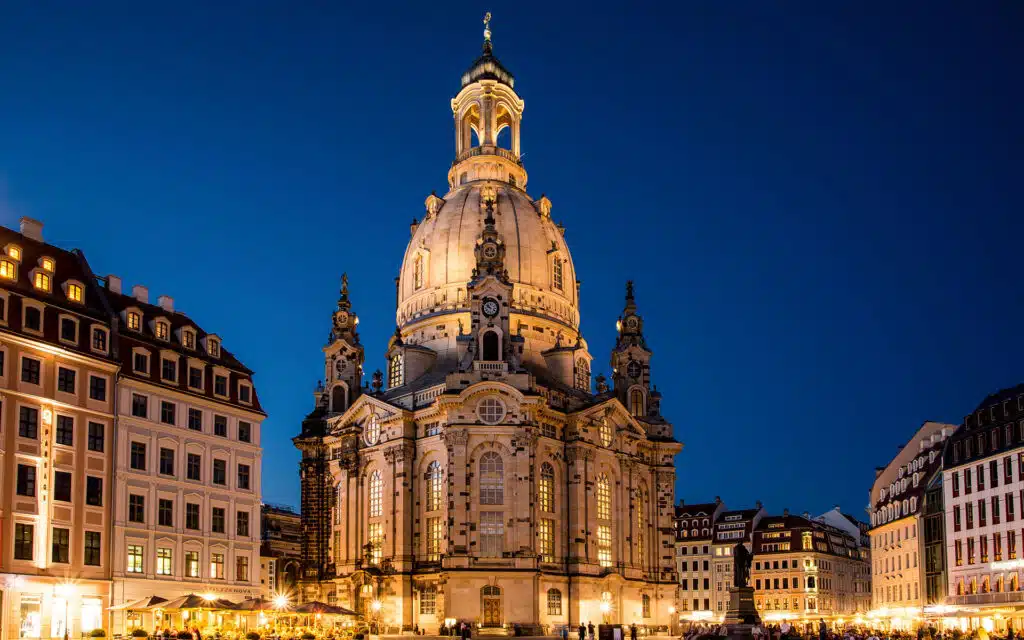
©By Linus2408 – Own work, CC BY-SA 3.0, https://commons.wikimedia.org/w/index.php?curid=35121548
Berlin Gay Tours
Queer Berlin Walking Tour: Discover Berlin’s LGBTQ+ history on a unique Queer Berlin tour, visiting gay neighborhoods and landmarks. Explore the poignant Holocaust memorial, stop by one of the city’s oldest LGBTQ+ bars, and cap it off with a visit to the Gay Museum.
Gay Berlin Tour: Explore the historical traces of Berlin’s oldest gay neighborhood, the rainbow quarter of north Schöneberg, between Dennewitzstraße and Nollendorfplatz. Discover how the district evolved and what it holds for the future. It promises to be an exciting tour!
Local gay guide – Discover the city like a local with gay guides. Enjoy authentic tours that take you to off-the-beaten-path neighborhoods, show you the LGBTQ+ scene, and recommend hidden gems. Berlin offers highlights, neighborhoods, food, and night tours.
Berlin Gay Bars
When visiting Berlin LGBTQ+ bars, prepare yourself for a great night out. Firstly, Schöneberg, in the city’s southwest, is the hotspot for many of the best LGBT+ establishments. It’s also the location for the annual Gay Pride Festival in July and the events throughout Pride Week. Some more famous bars are Marietta and New Action, which welcomes newbies looking to test the waters of the leather scene. Cafe Berio is another excellent place for delicious food and drinks. At the same time, Betty F*** is an energetic place to kick-start a big night out.
Gay bars in the German capital range from upbeat drag bars to sexy cruising bars, so you’ll be spoiled for choice.
Betty F***
Betty F*** is a cozy gay bar in central Berlin featuring a lounge-like atmosphere with bar seating and a comfortable red wraparound couch. The Bar has a speakeasy feel, as you need to ring the front doorbell to gain entry.
Bar Saint Jean
Bar Saint Jean, a downstairs bar, is a popular meeting place for gay men in Mitte. The French owners decorated the interior elegantly and discreetly with dim lighting and minimalist counters. The menu focuses on high-end long drinks and cocktails. No matter how busy, the last round is always at 3 am sharp.
Prinzknecht
Prinzknecht is a popular gay bar in Berlin, especially on Wednesdays. It has a great atmosphere and attracts a handsome crowd. The Bar is spacious, with a central bar and a separate smoking area at the back.
Tom’s Bar
Tom’s Bar is a famous gay club in Berlin’s Schöneberg neighborhood, attracting gay men worldwide yearly. It used to be a pure leather bar, but now everyone is welcome. The bar area features videos, a football table for gamers, and a backroom. Tom’s is a popular destination for all, especially during long nights of dancing with a wide range of music played by famous Berlin DJs, and there’s no cover charge.
Hafen
The Bar is a popular meeting place for gay Berliners and international regulars. It hosts live performances by various artists playing popular hits. The friendly atmosphere is a hit, and people get to know each other quickly.
Gay Nightlife in Berlin
Discover Berlin’s vibrant nightlife scene! The city’s clubs are open all night so you can party until sunrise. Check out the jazz clubs for live performances and jam sessions, or head to the bars for delicious cocktails. Remember that some clubs and casinos are strictly for adults only.
The SchwuZ is the most significant and most crucial queer club and event venue in Berlin.
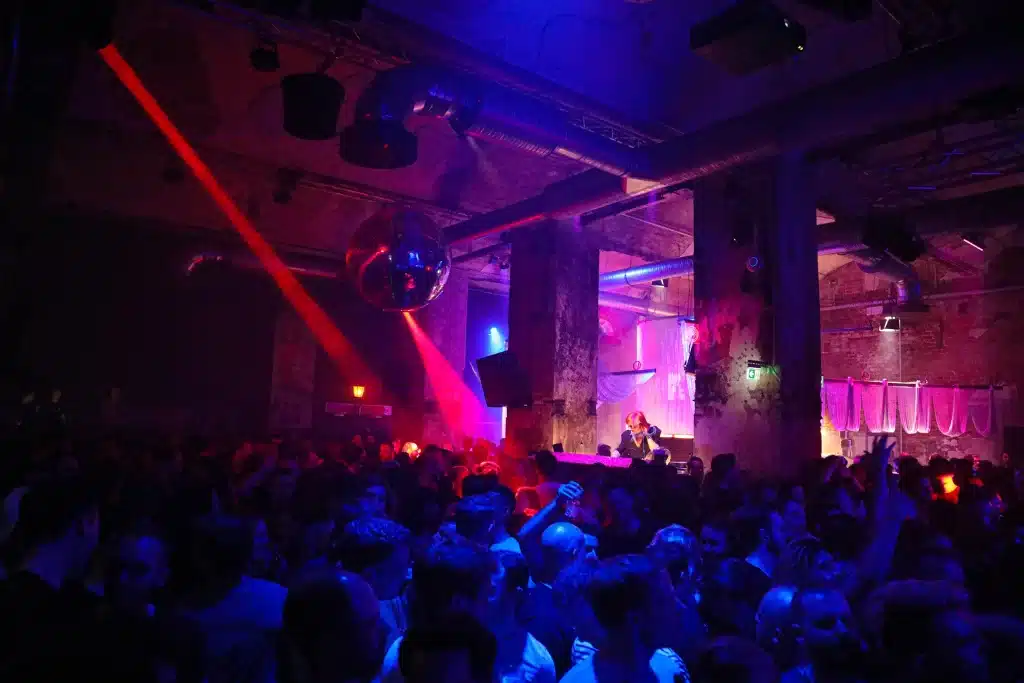
©promo/Tasty/Samet Durgun
SchwuZ Club
Founded in 1977, the venue is known for its mix of indie, modern pop, retro-kitsch, techno, and electro music, as well as art installations, LGBTQ+ talks, live music, gay parties, and drag shows featuring international queens across all three dance floors. Most importantly, ‘SchwuZ’ is the most significant and most crucial queer club and event venue in Berlin.
GMF
Are you looking for a great place to dance in Berlin? Check out GMF! This club has a wide variety of music, from ultra-pop to hard techno and everything in between. GMF is the perfect spot if you need help with what to do on a Sunday night. Each Sunday, the club has a different theme, and during Berlin Pride, it hosts the biggest pride parties. So get ready to dance and have a great time!
The most popular queer club in Eastern Berlin: Die Busche.
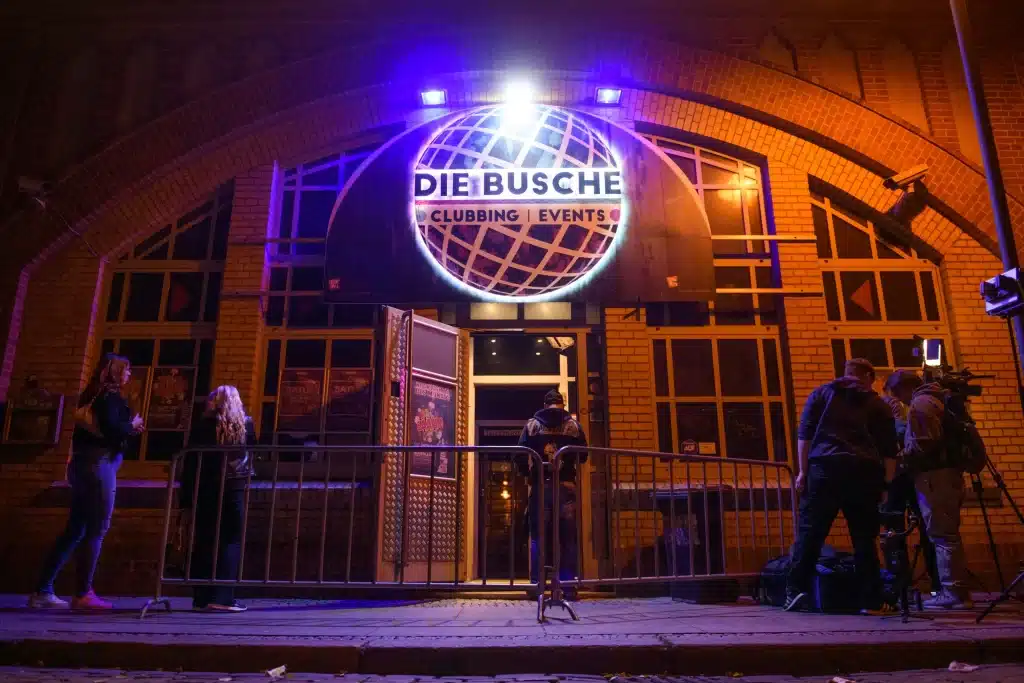
©Jason Harrell
KitKat Club
The famous nightclub in Berlin opened in March 1994. It’s also renowned for fetish parties, techno & trance music. More importantly, the fetish nights are mixed and open to everyone. But be sure to dress for the occasion to avoid being turned away. Lastly, the space has three floors with weird and beautiful things to see, an outdoor area, and even a pool.
Berghain/Panorama
Berghain is a renowned nightclub in a former warehouse. It’s hard to get in, but it’s a memorable experience. The Panorama bar upstairs has the best music, and there are spots for fun.
Sauna’s & Cruising Bars in Gay Berlin
Firstly, Berlin is the daddy of sex and fetish, with far too many venues to mention them all. So, here are a few favorites:
Der Boiler
One of the most well-known gay saunas in Berlin is located in Kreuzberg. The sauna offers traditional spa amenities along with a variety of darkroom adventures. On-site, there is a nice bar that serves drinks and snacks. The facilities are kept spotless, and you will find a diverse group of nice-looking guys of various ages.

©boiler-berlin.de
LAB.ORATORY
LAB is another legendary venue in the basements below Berghain, where anything goes when it comes to kink. High on the list of the best fetish venues in the world, it has everything you could imagine and then some. Don’t go if you’re easily shocked; check their nights to avoid surprises.
Sheune
this small yet often full cruising Bar is found in the Schöneberg district, especially on weekends. Sheune has a loyal following, with the same locals frequently attending, giving it a friendly atmosphere. The “barn bar” has special fetish-themed nights ranging from rubber to uniforms, and on Sundays, get a petite hardcore with Naked Party.
Connection Club
Firstly, prepare to enter the Twilight Zone for real. That’s the name of the cruising area in the basement! Connection Club is a techno/house dance club with cruising parts. Still, the cruising elements take over on all the floors around midnight.
Bull
This club has a great combination of a hang-out bar and a fetish club with a well-equipped darkroom – full of swings and glory holes galore. Bull is famous with the older crowd and the best place to be – or find – a leather-clad daddy. That said, all kinky types are welcome, from puppies to those who want to be naked.
Gay Events in Berlin
When it comes to annual gay events, Berlin leads the way! It’s like our European answer to San Francisco, from the Pig parties of Folsom to the քorɳ event of Hustlaball. Here’s our summary of some of the best gay events in Berlin to look out for:
Easter Berlin Leather Week – March/April
The Berlin BLF-ECMC Leather and Fetish Week is the most extensive leather, rubber, skinhead, uniform, sportswear, and fetish lovers’ meeting in Europe. Furthermore, the BLF group organizes it and crowns the next Mr. Leather Berlin on Easter Sunday. The focal point of the event is Nollendorfplatz in Schöneberg. It is one of the best leather, rubber, skin gear, and uniform festivals. The festival includes lots of parties, including a fantastic Cabaret.

©Fabian Boettcher_fleckenweg_web
The Lesbian and Gay City Stadtfest Festival – June/July
Stadtfest is the biggest street festival for Berlin’s LGBTQ community, every June/July around Nollendorfplatz in Schöneberg. The festival is immense, attracting over 400,000 visitors yearly! Furthermore, events include films, celebrity talk shows, gay entertainers, and live DJs.
Berlin Gay Pride (Christopher Street Day) – July
It is the main Pride event of Berlin, often called CSD or St Christopher’s Street Day in Europe. The first occurred on 30th June 1979 as a protest rally of 450 people. Today, this has become one of the most influential gay Pride events worldwide, attracting around 1 million people! The highlight is the Saturday parade, which follows a route from the Kurfurstendamm to the Siegesäule (Berlin Victory Column).
Folsom Europe – September
This celebration is the most extensive gay leather festival in Europe and has been going strong since 2003. Furthermore, it attracts around 20,000 guys into leather and more. The highlight is the renowned outdoor Folsom Europe Street Fair, which takes place along Fuggerstrasse and Welserstrasse. Some of the best parties happen during Folsom Europe, particularly Pig, and P*rverts.
Hustlaball Circuit Party Weekend – October
Firstly, it is one of the biggest X-rated parties worldwide – a weekend of fun, fantasy, and dancing! Consequently, this is where some top-rated actors gather and perform pretty in-your-face live shows. The best Hustlaball event takes place at the KitKatClub.
Safety tips for every LGBT+ traveler in Berlin
According to the Spartacus Gay Travel Index, Germany ranks among the top 15 LGBT-friendly nations worldwide. It is known as an incredibly welcoming and gay-friendly country, particularly in the larger cities. LGBTQ+ visitors looking for welcoming destinations should visit Berlin, Munich, Hamburg, Frankfurt, and Cologne, as these are considered Germany’s most significant and gay-friendliest cities.
Take a look at
References and sources:
Photo credits:
Feature photo credits: rainbowcities.com/cities/berlin/

